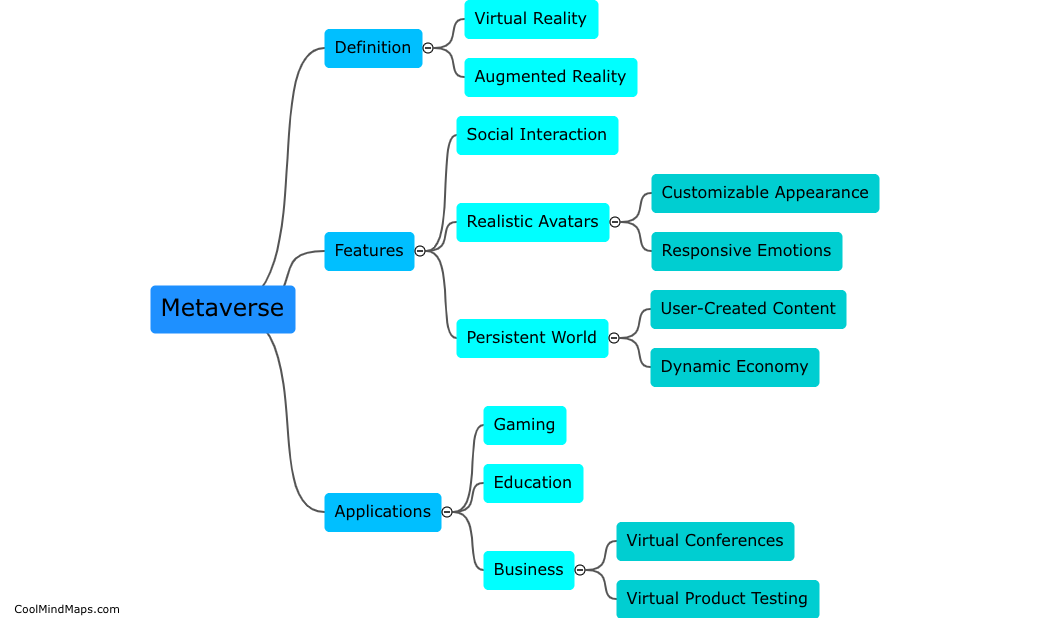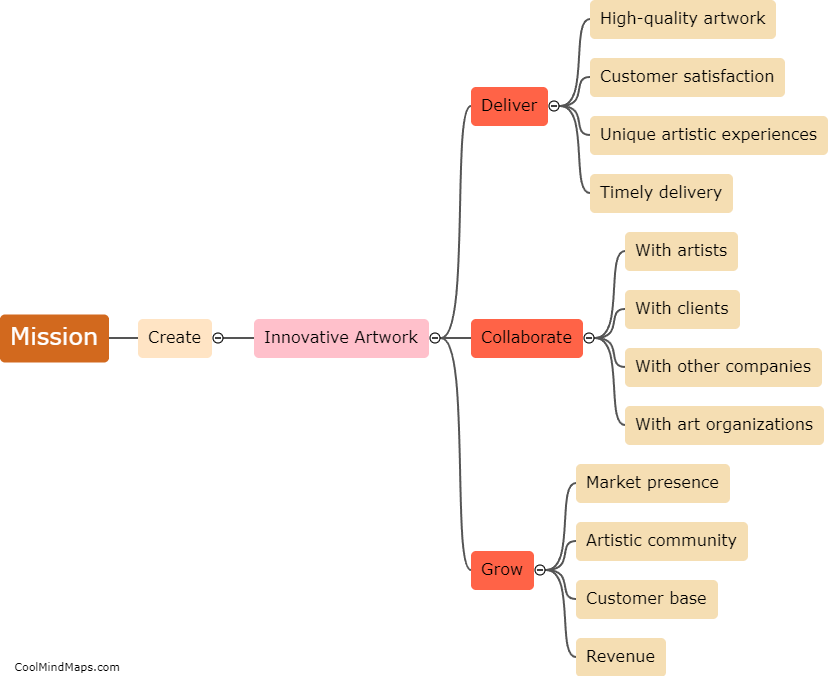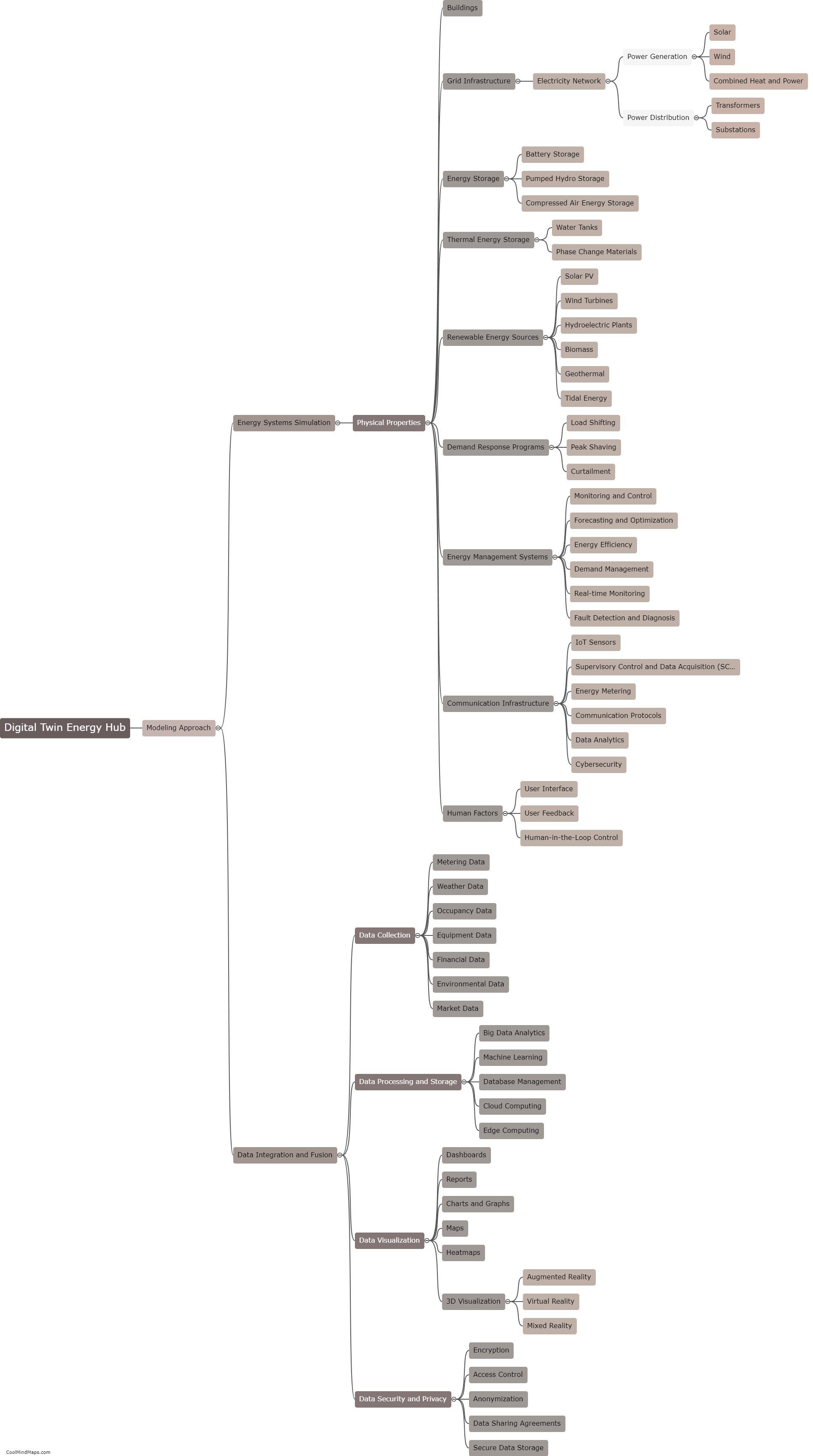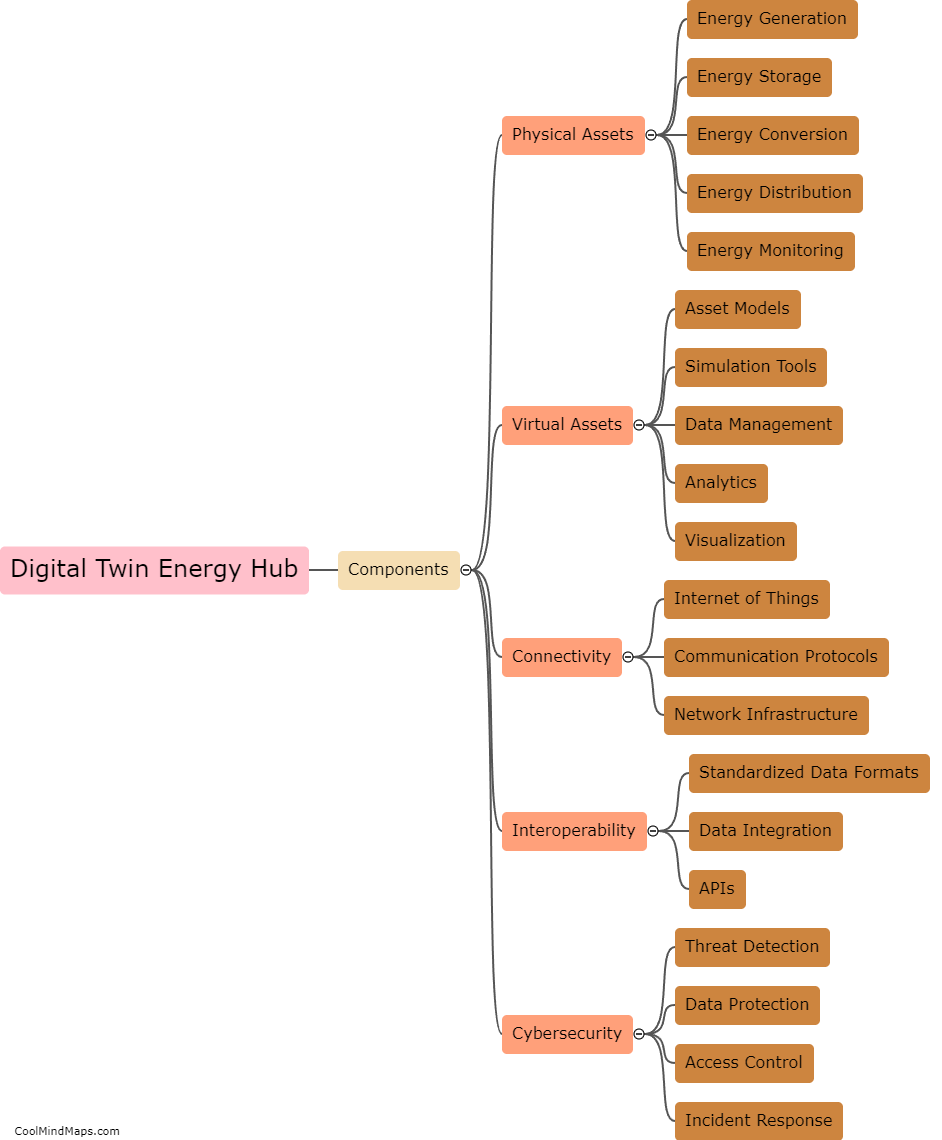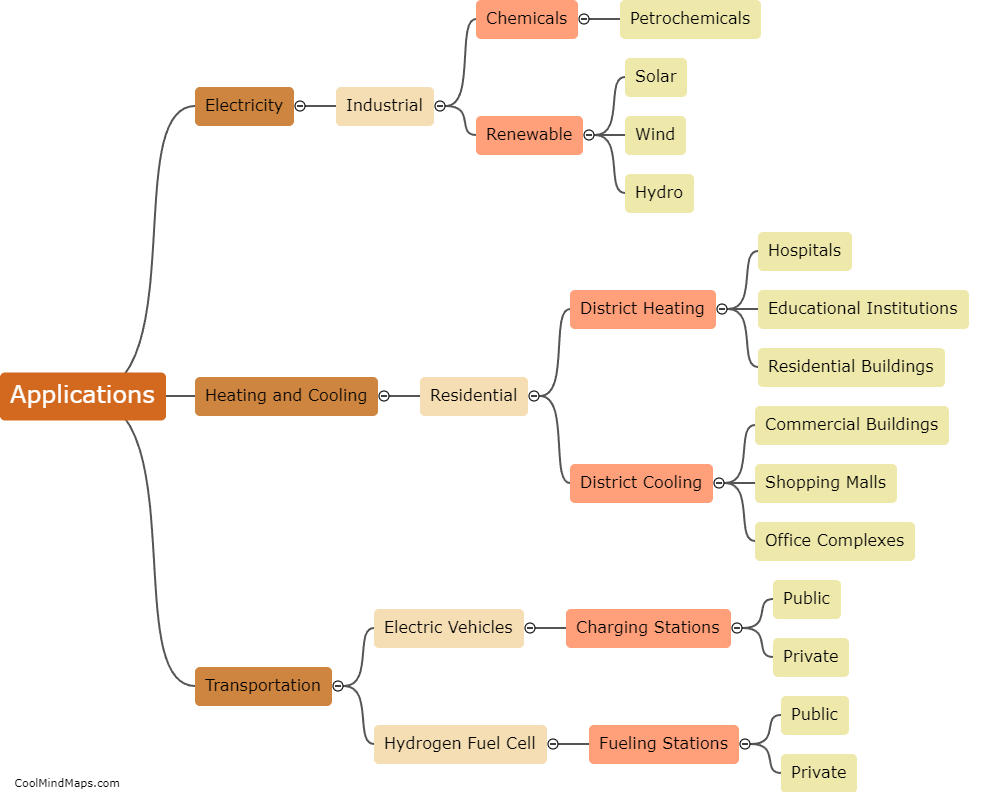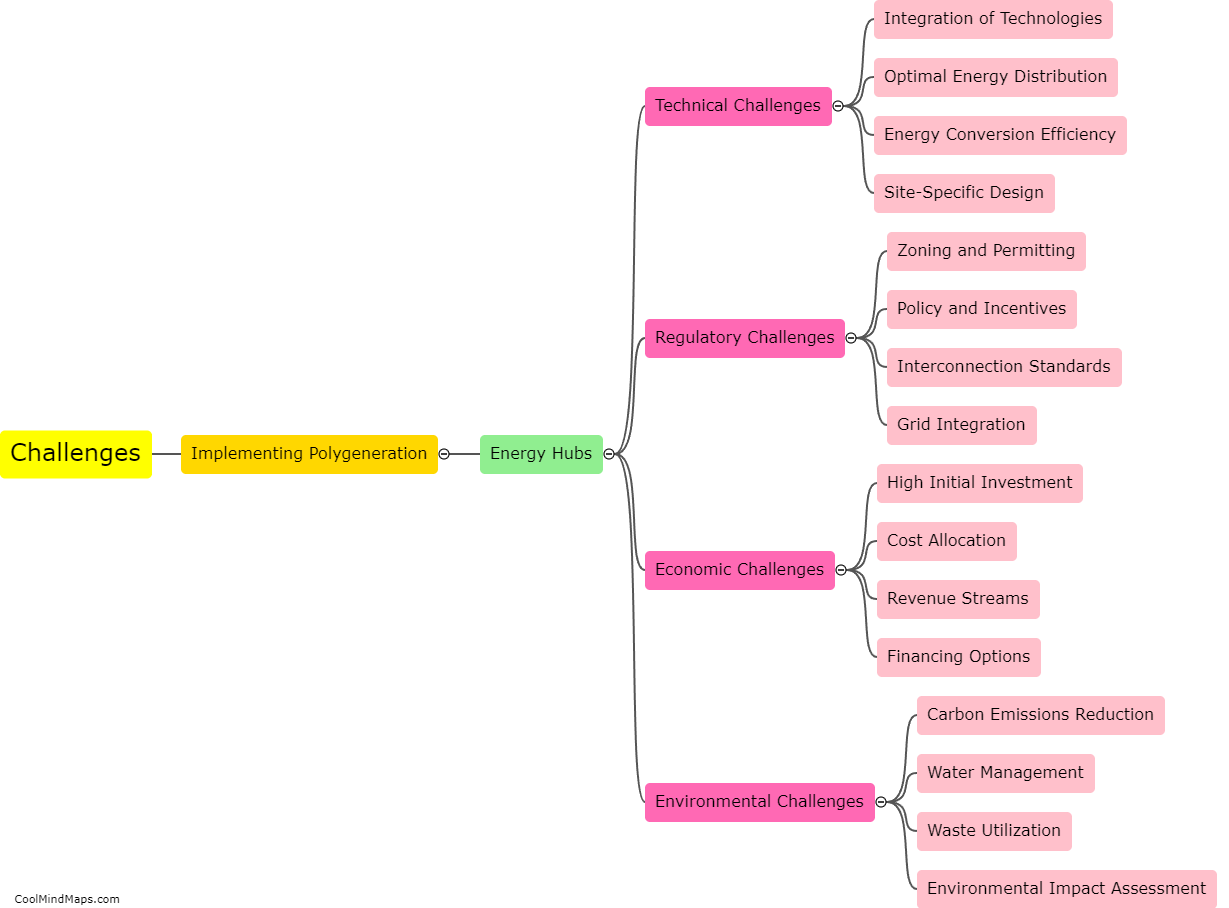How do polygeneration energy hubs work?
Polygeneration energy hubs, also known as integrated energy systems, are innovative and sustainable solutions that combine multiple energy technologies to optimize energy generation, consumption, and storage. These hubs usually rely on a combination of renewable energy sources like solar, wind, and biomass, as well as conventional sources such as natural gas or coal. The generated electricity can be used to power various applications like heating, cooling, hot water supply, or even industrial processes, increasing overall efficiency. Additionally, excess energy can be stored in batteries or converted into hydrogen for later use. Polygeneration energy hubs aim to reduce energy waste, enhance energy resilience, and lower carbon emissions by utilizing a diverse mix of energy sources in a decentralized and integrated manner.
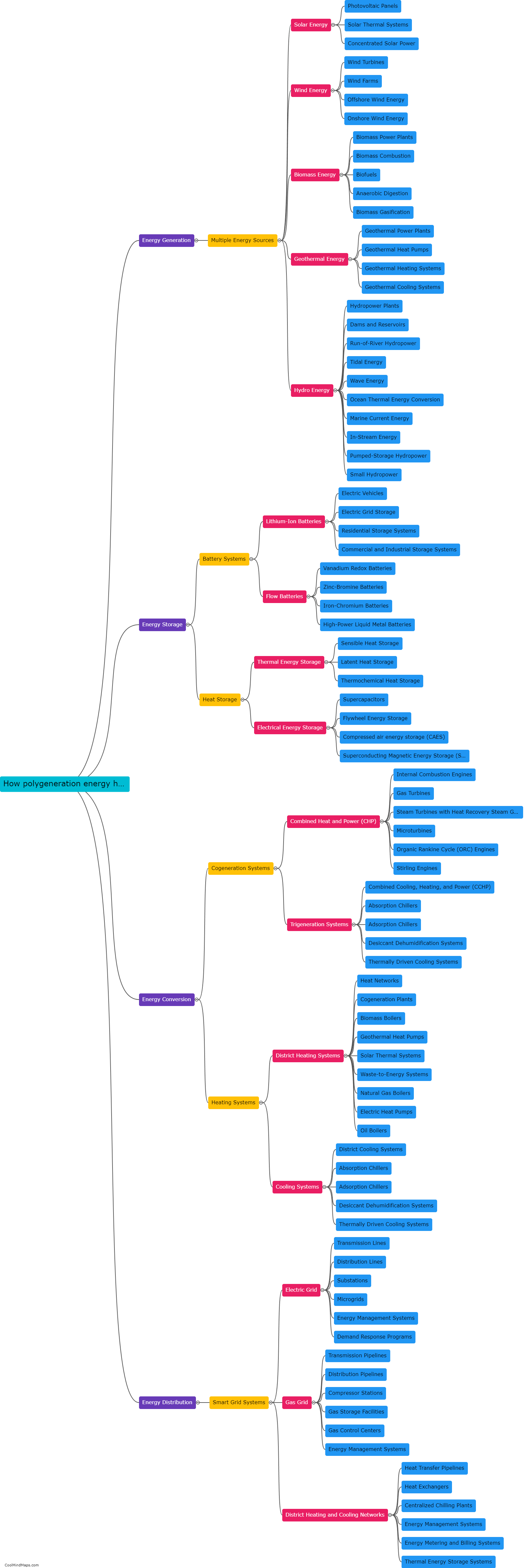
This mind map was published on 17 October 2023 and has been viewed 90 times.
